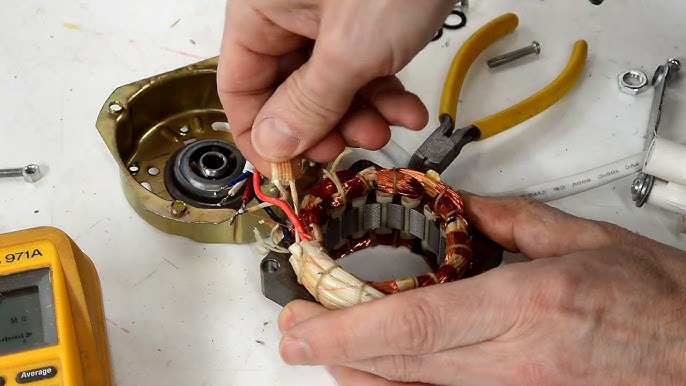
Introduction:
Electric fans have become indispensable appliances in households and offices, providing a refreshing breeze on hot days. However, like any mechanical device, electric fans may encounter issues over time, ranging from minor malfunctions to more complex problems. This comprehensive guide aims to empower you with the knowledge and skills needed to troubleshoot and repair an electric fan, ensuring it continues to deliver cool comfort for years to come.
Section 1: Understanding the Components of an Electric Fan
Before diving into repairs, it’s essential to familiarize yourself with the key components of an electric fan. These typically include:
- Motor: The heart of the fan, responsible for converting electrical energy into mechanical motion.
- Blades: The rotating blades that propel air.
- Switches: Control mechanisms for turning the fan on/off and adjusting speed.
- Power Cord: The electrical cord that connects the fan to a power source.
- Base and Housing: The structural elements that provide support and protection for internal components.
Section 2: Common Electric Fan Issues and Troubleshooting
- Fan Not Turning On:
- Check the power source and ensure the outlet is functioning.
- Inspect the power cord for any visible damage.
- Test the fan in another outlet to rule out electrical issues.
- Inconsistent Speeds or Noisy Operation:
- Lubricate the motor with fan oil to reduce friction.
- Clean accumulated dust and debris from the blades and housing.
- Check for loose or damaged blades that may cause noise during operation.
- Overheating Motor:
- Ensure proper ventilation around the motor by cleaning dust and debris.
- Check for obstructions that may impede the rotation of the blades.
- Lubricate the motor to reduce heat generated by friction.
- Faulty Switches:
- Inspect the switches for visible damage.
- Test the continuity of the switches using a multimeter.
- Replace damaged or malfunctioning switches.
Section 3: Tools and Equipment for Fan Repair
To effectively repair an electric fan, it’s beneficial to have the following tools and equipment:
- Screwdrivers: Phillips and flat-head screwdrivers for opening the fan housing.
- Multimeter: To test electrical continuity and identify faulty components.
- Fan Oil: Specifically designed oil for lubricating the fan motor.
- Cleaning Supplies: Soft brushes, compressed air, and cleaning solutions for removing dust and debris.
- Replacement Parts: Commonly replaced parts include switches, power cords, and blades.
Section 4: Step-by-Step Fan Repair Guide
- Unplug the Fan: Before attempting any repairs, ensure the fan is unplugged from the power source to avoid electrical hazards.
- Open the Housing: Use screwdrivers to remove the screws securing the fan housing and access internal components.
- Inspect and Clean:
- Inspect the motor for visible damage, loose wires, or burnt components.
- Clean accumulated dust and debris from the blades, motor, and housing.
- Lubricate the Motor:
- Apply fan oil to the motor’s moving parts to reduce friction and prevent overheating.
- Test the Switches:
- Use a multimeter to test the continuity of switches.
- Replace any faulty switches with compatible replacements.
- Check the Blades:
- Inspect the blades for damage or warping.
- Replace damaged blades with new ones.
- Reassemble the Fan:
- Once repairs are complete, reassemble the fan by securing the housing with screws.
- Plug In and Test:
- Plug the fan back into the power source and test its functionality at different speeds.
Section 5: When to Seek Professional Help
While many fan issues can be addressed through DIY repairs, there are situations where professional assistance may be necessary. Consider seeking help if:
- Electrical Issues Persist: If you are unsure about dealing with electrical components or if the problem persists after troubleshooting.
- Motor Replacement: If the motor is beyond repair or replacement parts are unavailable.
- Warranty Coverage: If the fan is still under warranty, it’s advisable to consult the manufacturer or authorized service centers.
Conclusion:
Repairing an electric fan can be a satisfying and cost-effective endeavor with the right knowledge and tools. By understanding the components, troubleshooting common issues, and following a step-by-step repair guide, you can breathe new life into your fan and extend its lifespan. Remember to prioritize safety by unplugging the fan before any repair attempts, and always seek professional assistance if you are unsure or encounter complex electrical issues. With this comprehensive guide, you’ll be well-equipped to master the art of restoring and repairing your electric fan.